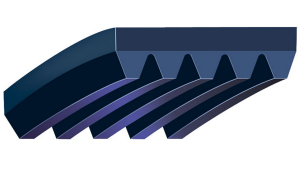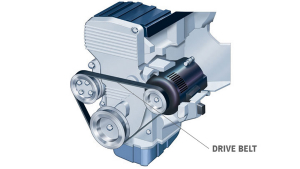Drive Belts
In order to operate, your car engine relies on many other 'helping hands' around it. These include the cooling fan, water pump, power steering pump, alternator, and air conditioning compressor. All must work in perfect harmony to provide electrical charge, cooling, and other energies for safe, comfortable driving. All of these components rely on one piece of equipment, the drive belt, to perform their many mechanical tasks. Drive belts quite literally keep the many wheels of the engine turning.

Drive Belts will last 60,000 to 100,000km with normal use, but this can vary greatly due to harsh operating conditions. Signs and effects of a worn out drive belt:
- A worn out belt may slip and become noisy
- Reduced cooling efficiency
- Improper battery charging
- Problems with the power steering or air conditioning
- Any visible damage to the belt

Drive Belts
The role of a drive belt is to keep the many auxiliary components attached to your engine, turning.
Individual Models Drive Belts are specifically designed for each individual model for perfect fit and tension between the various components they must drive. Many non-genuine drive belts are 'one size fits all' designs that can either be too loose, or too tight - either way, they can dramatically reduce the performance of relevant equipment.
- High Quality Materials With a rubber coated bottom layer to prevent cracking to heat-resistant tensioning members, Genuine Drive Belts are multi-layered for maximum longevity and performance.
Drive Belt Types
There are several different types of drive belts available - each performs an individual role according to the equipment it drives and engine type. These variations are:
- Raw Edge BeltsIn plain, multi-ply and cogged configurations for passenger cars, trucks and buses including diesels.
- V-Ribbed BeltsThese are thinner and more efficient in transferring power, and are used in small and high performance engines.
Drive Belts will always be inspected for wear and/or replaced according to the servicing schedule.
